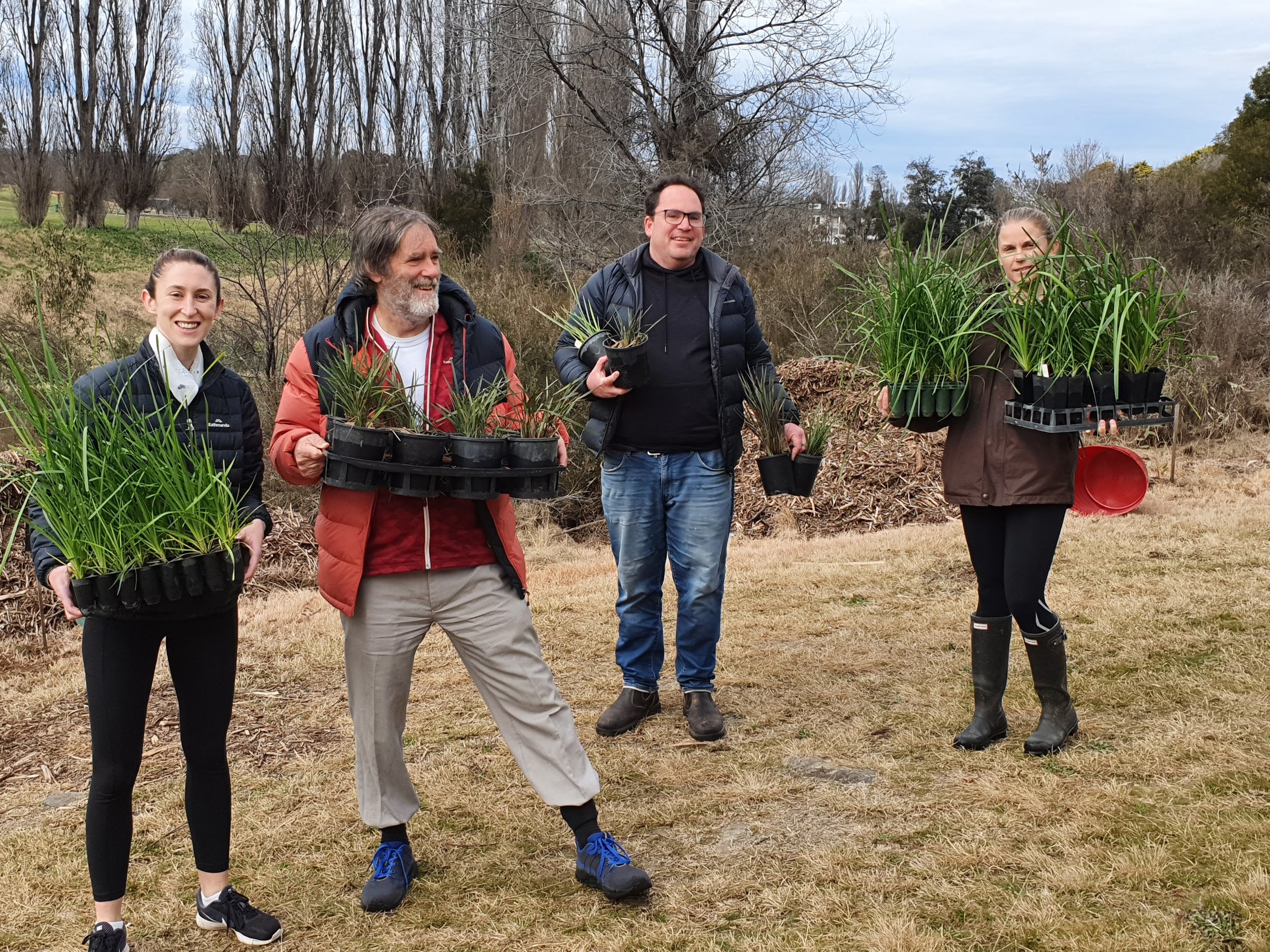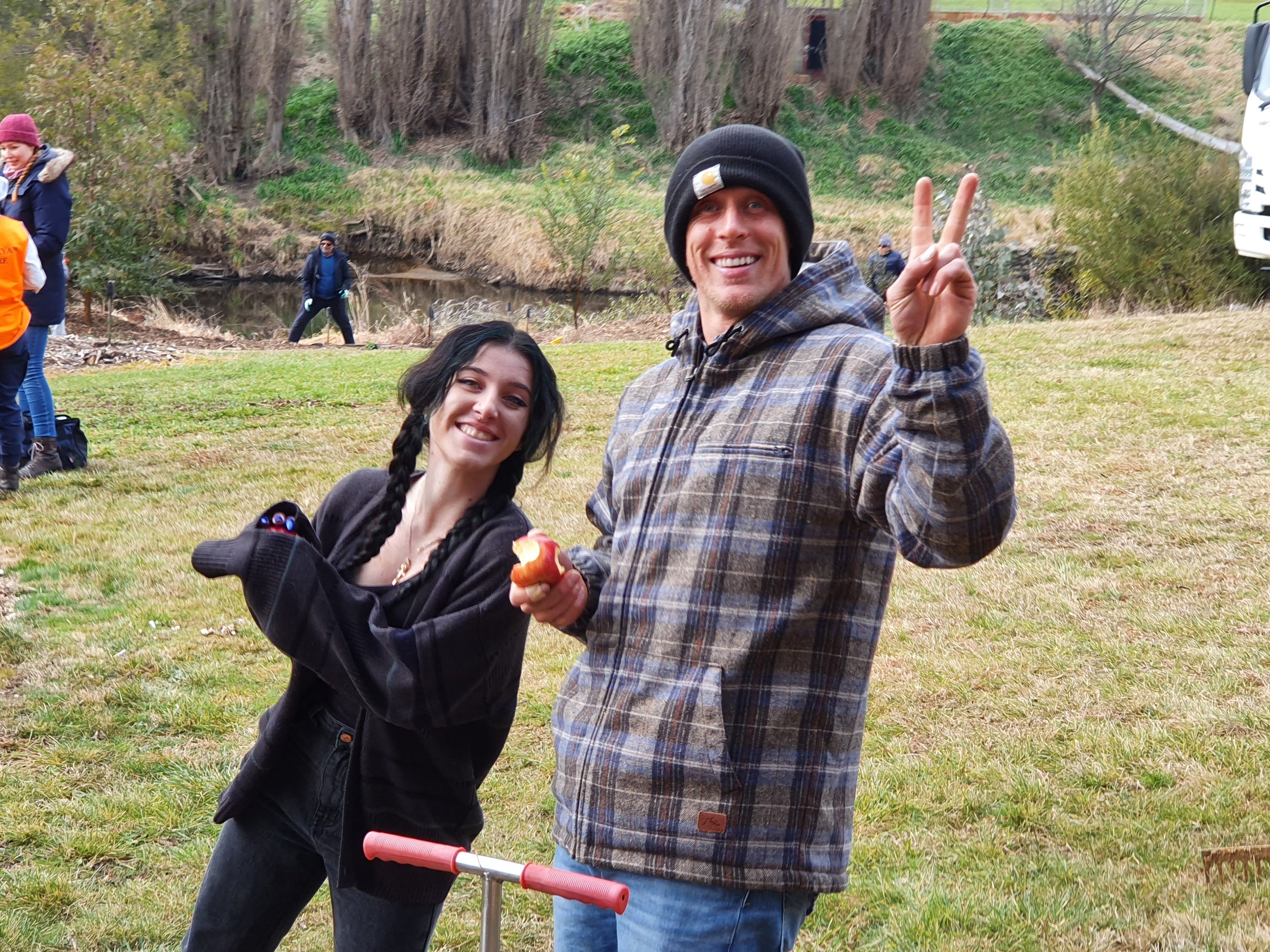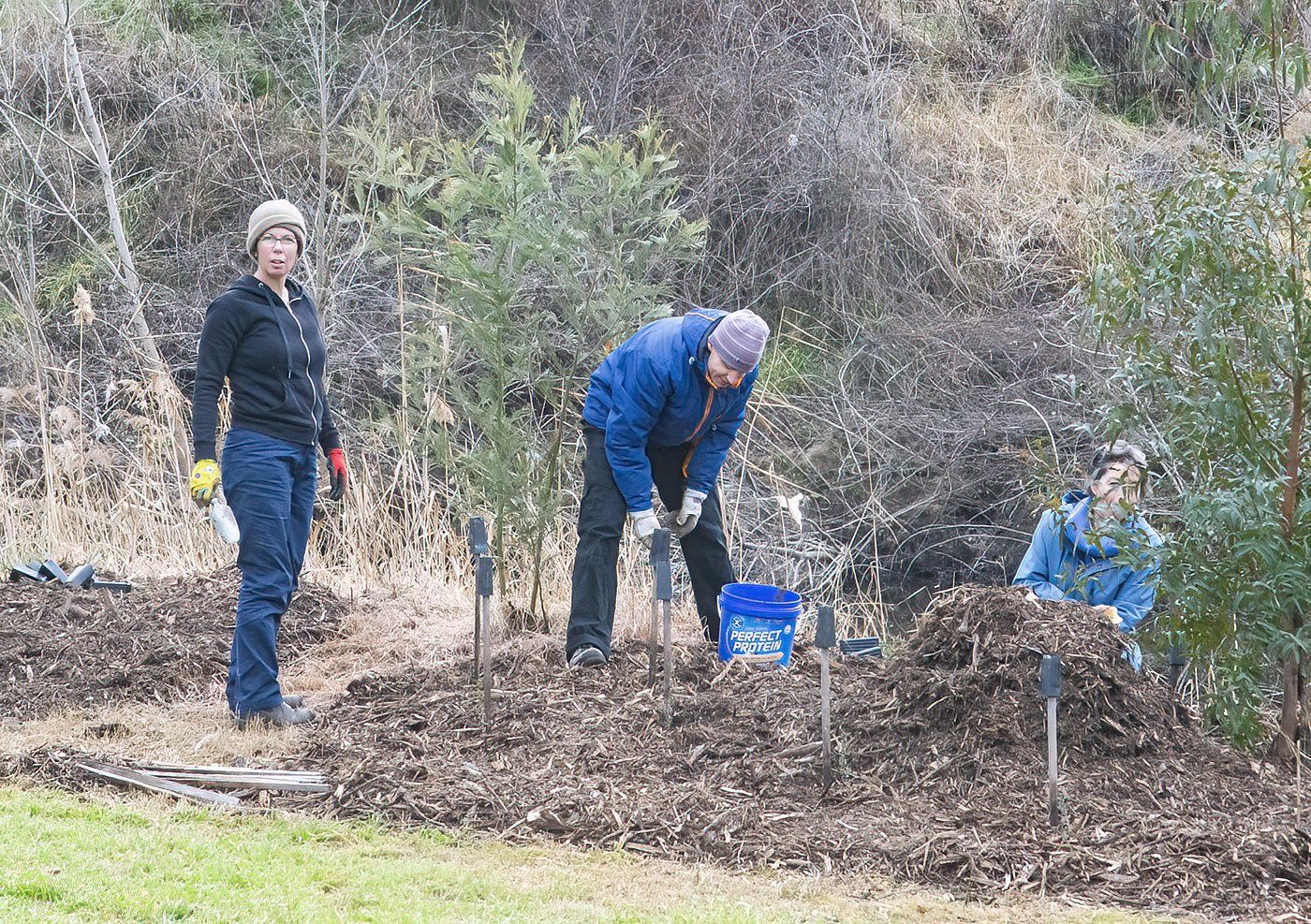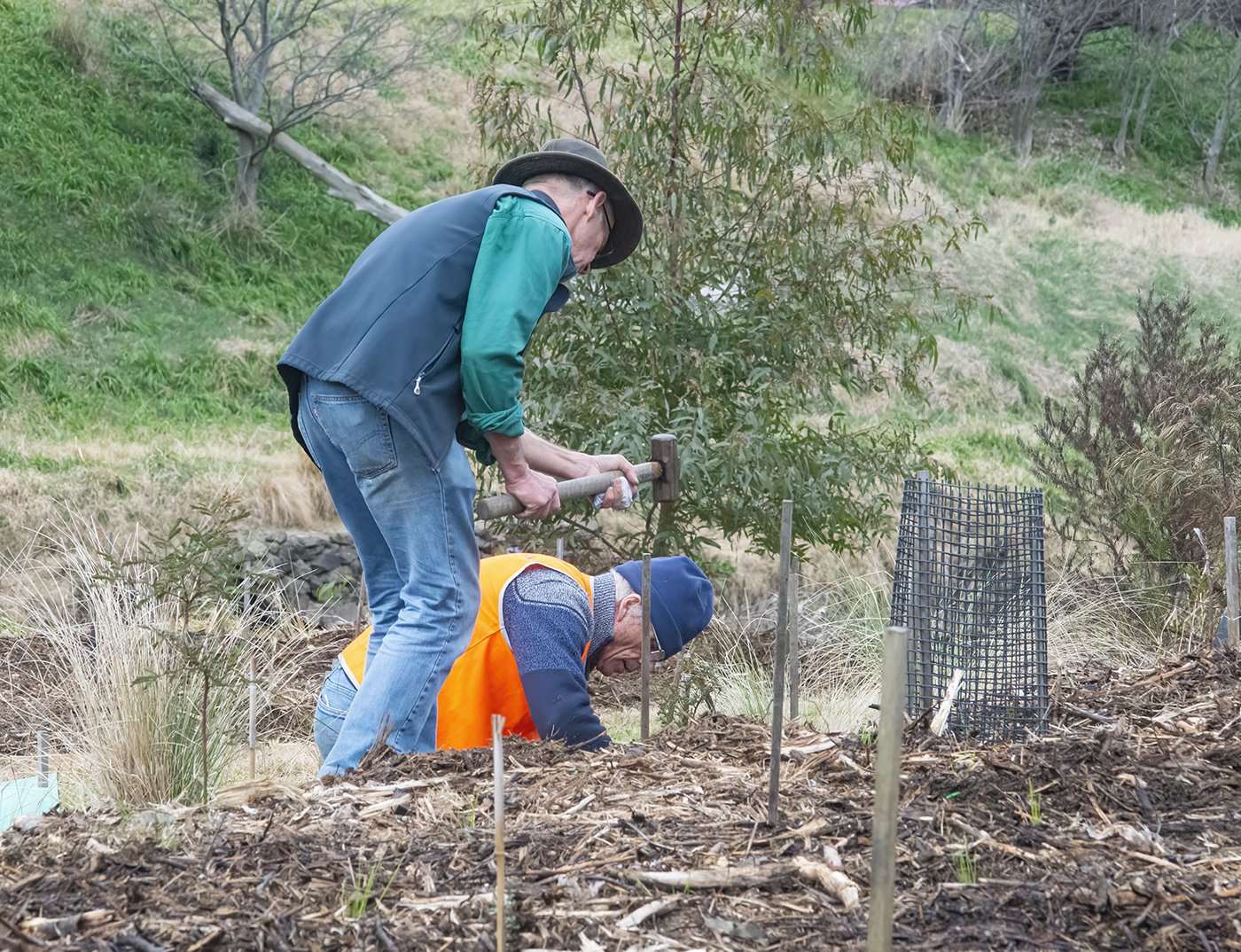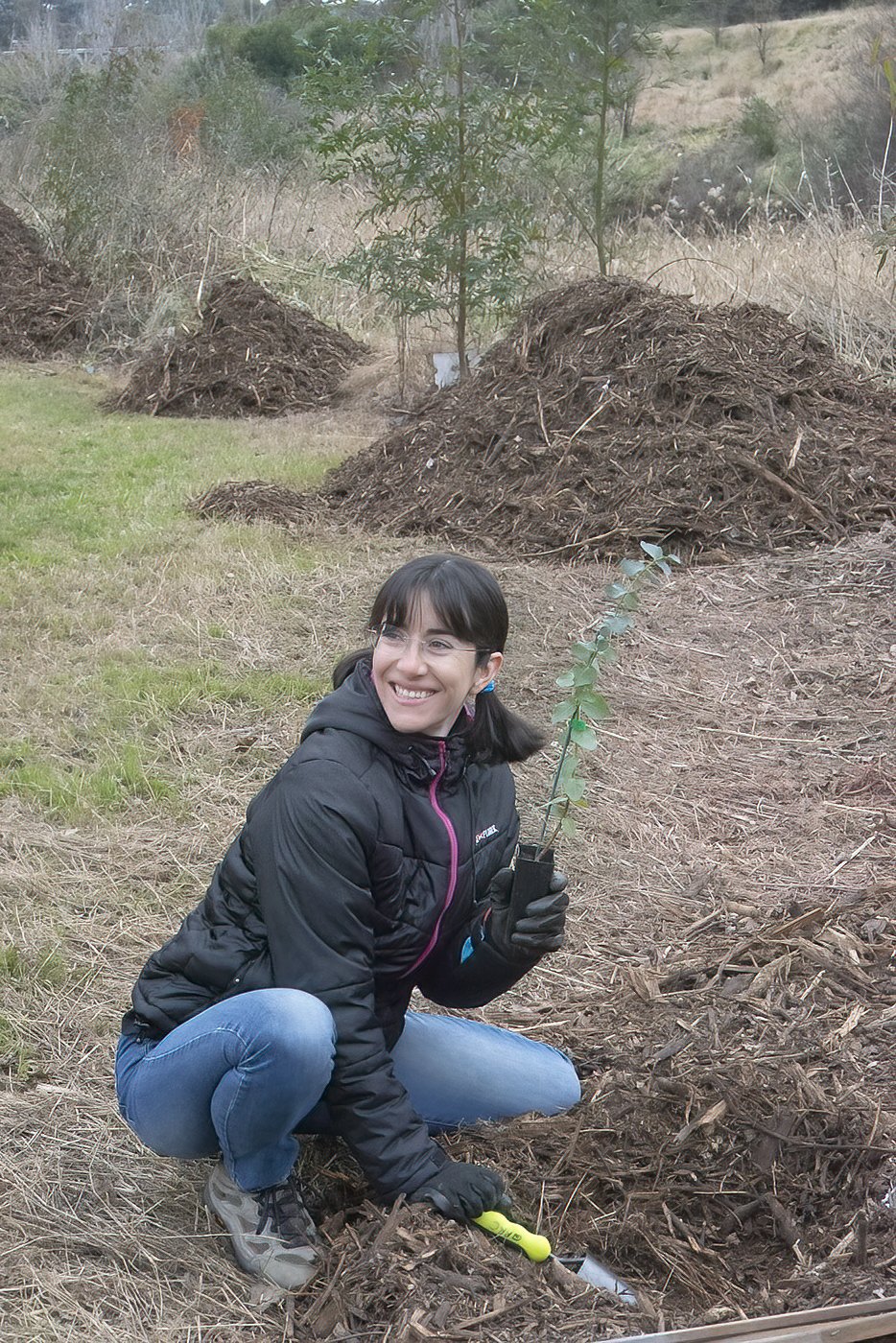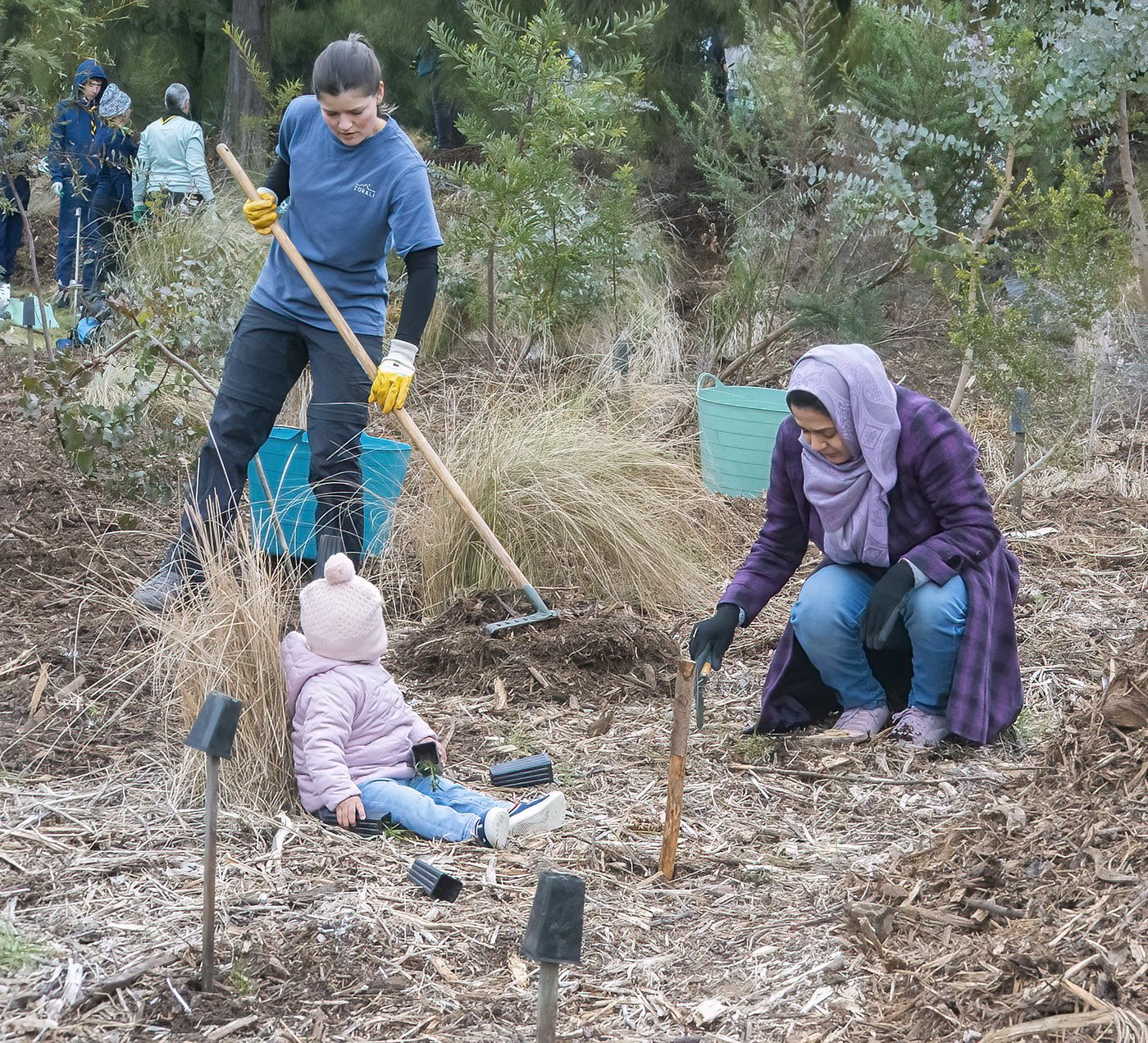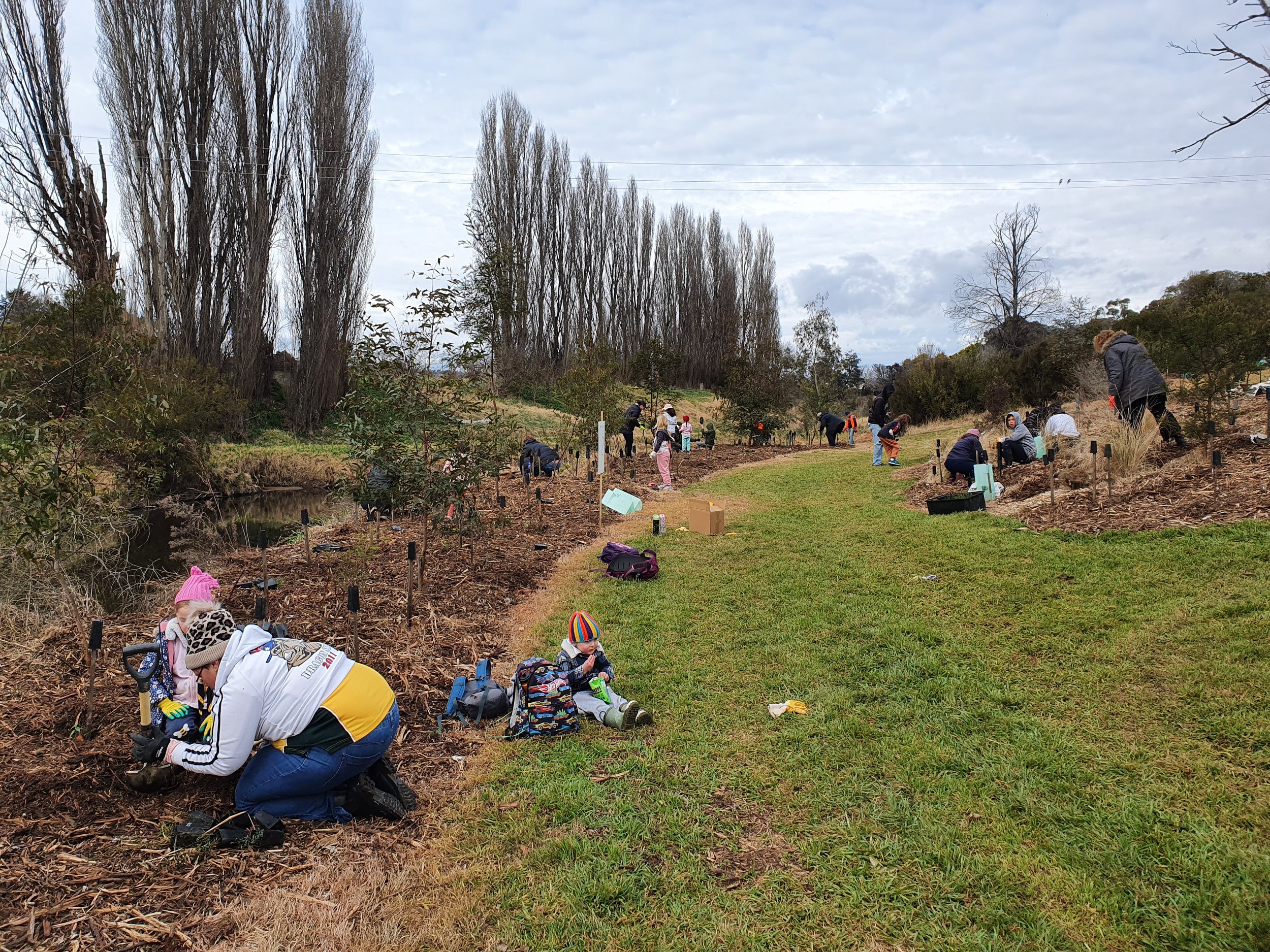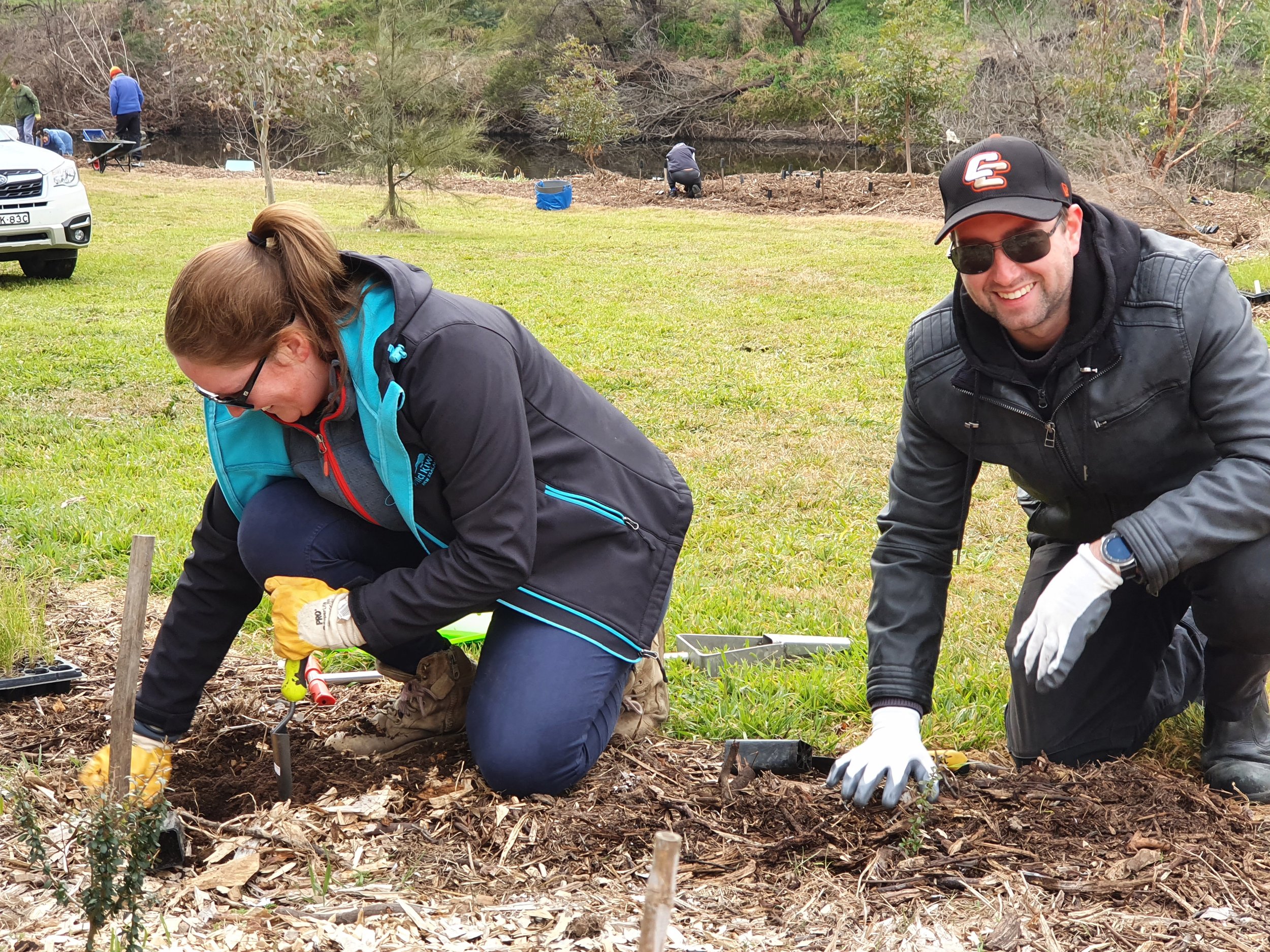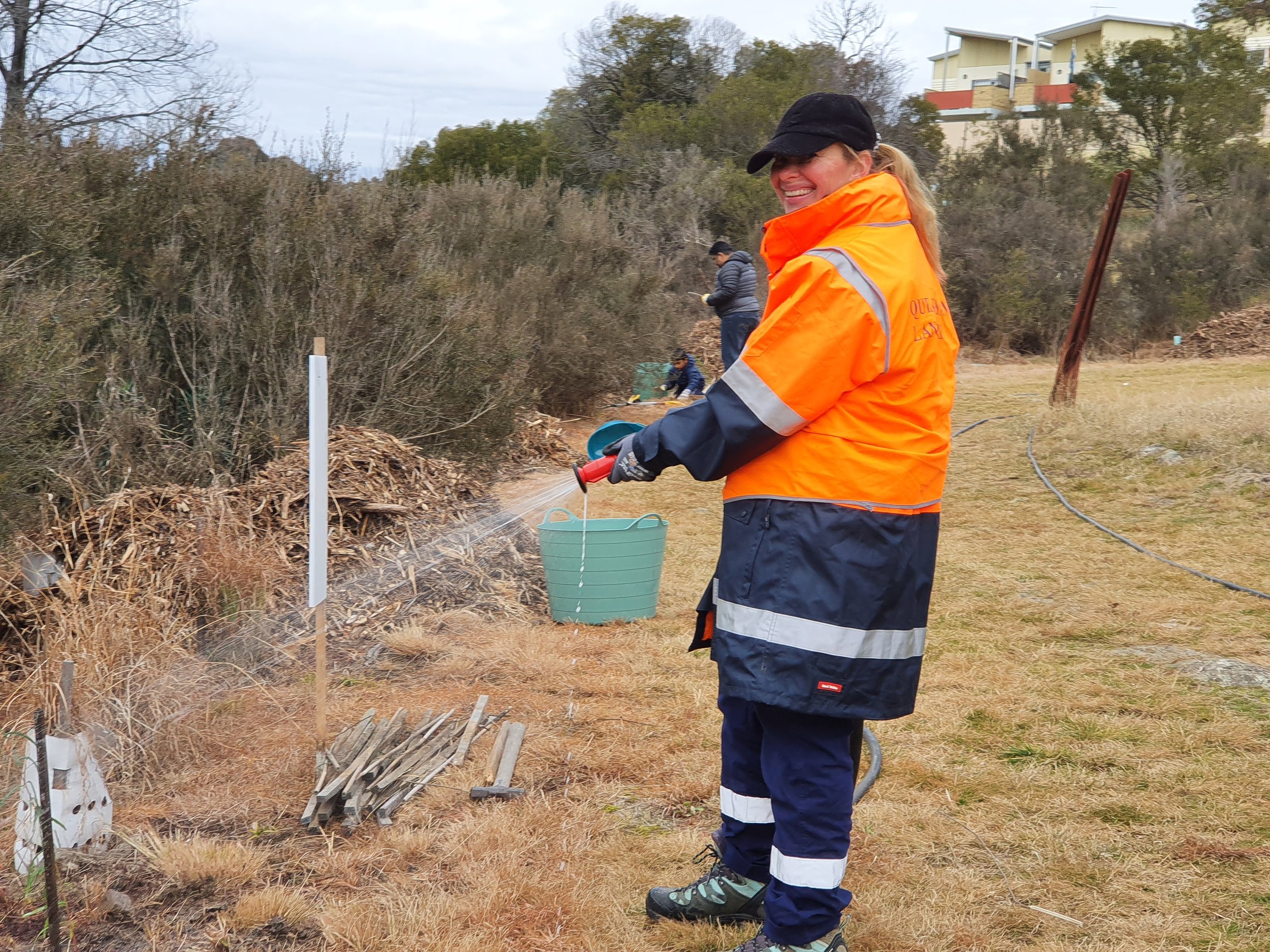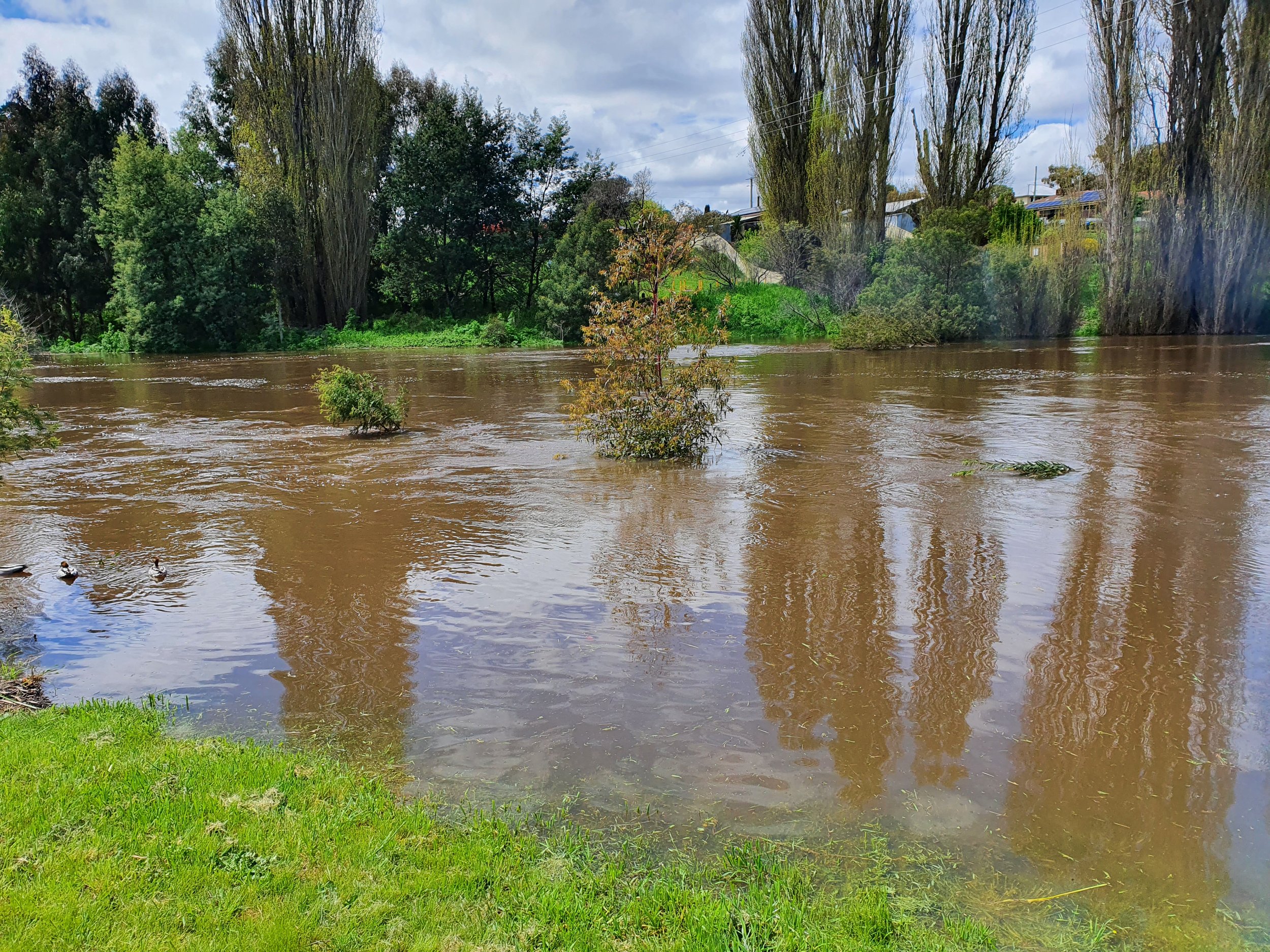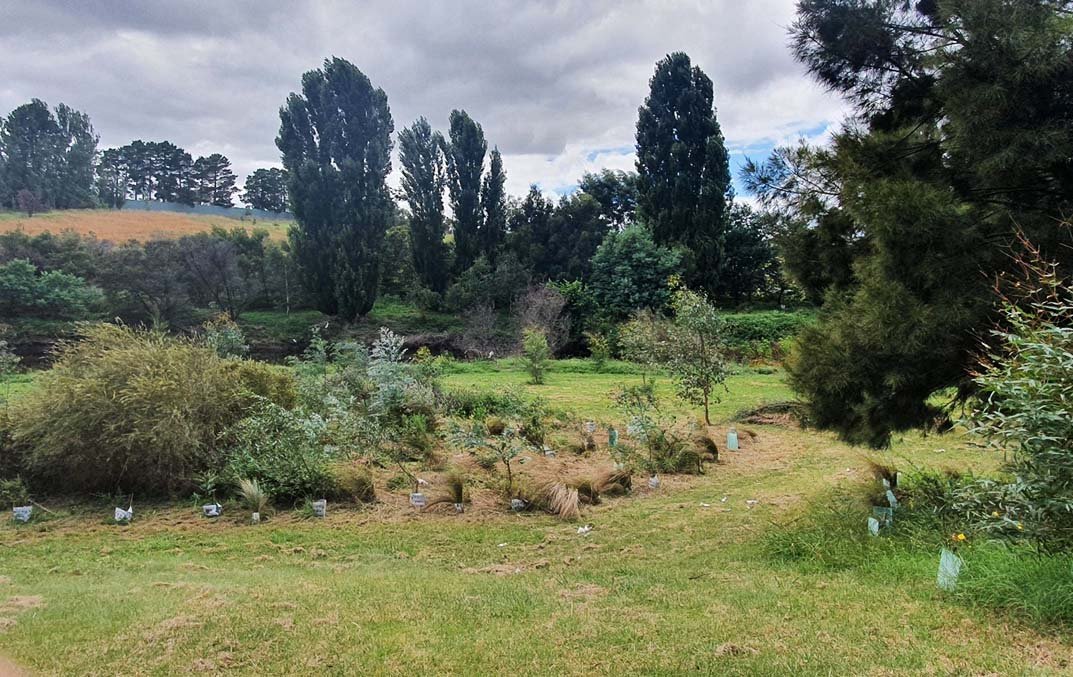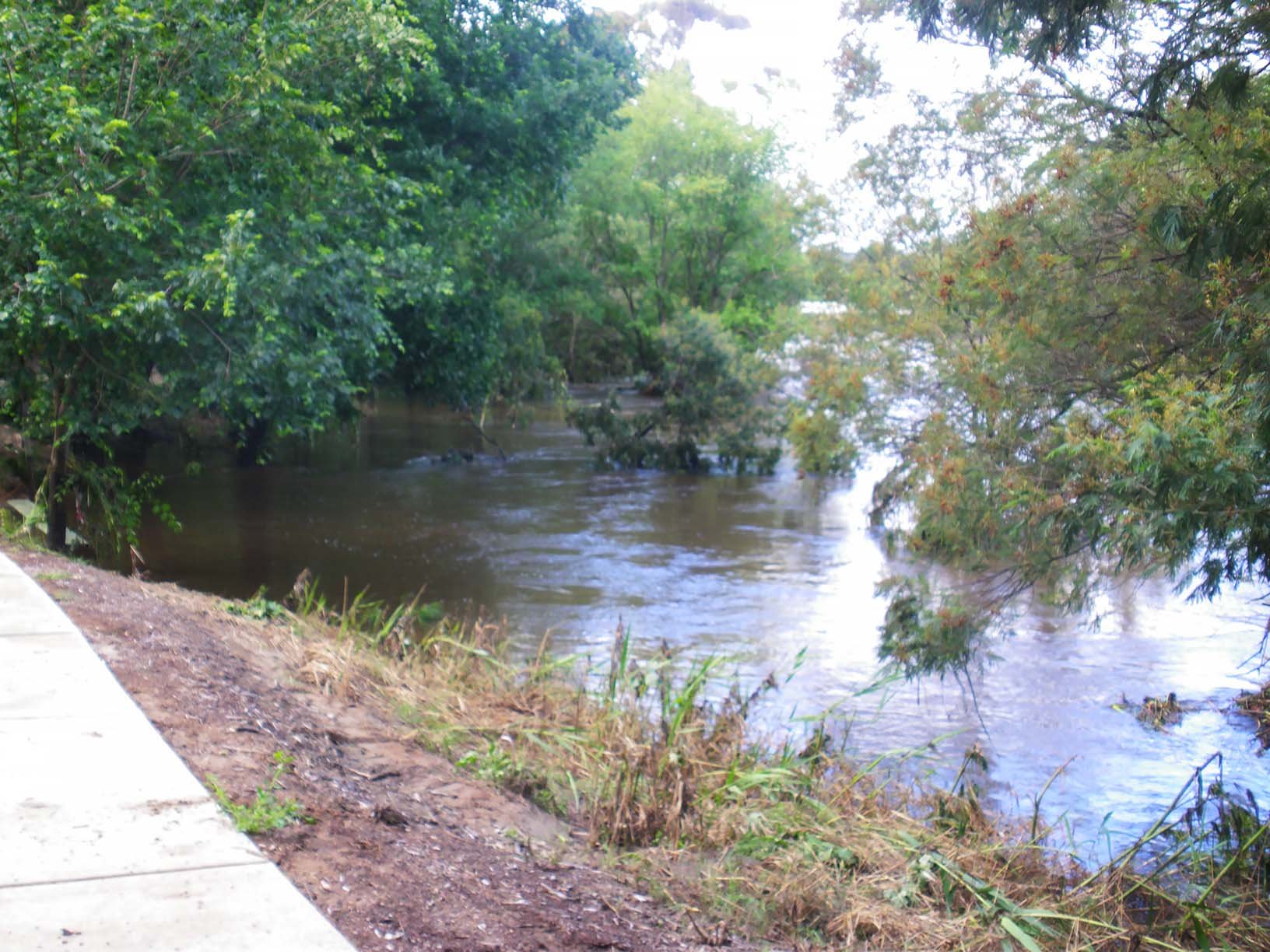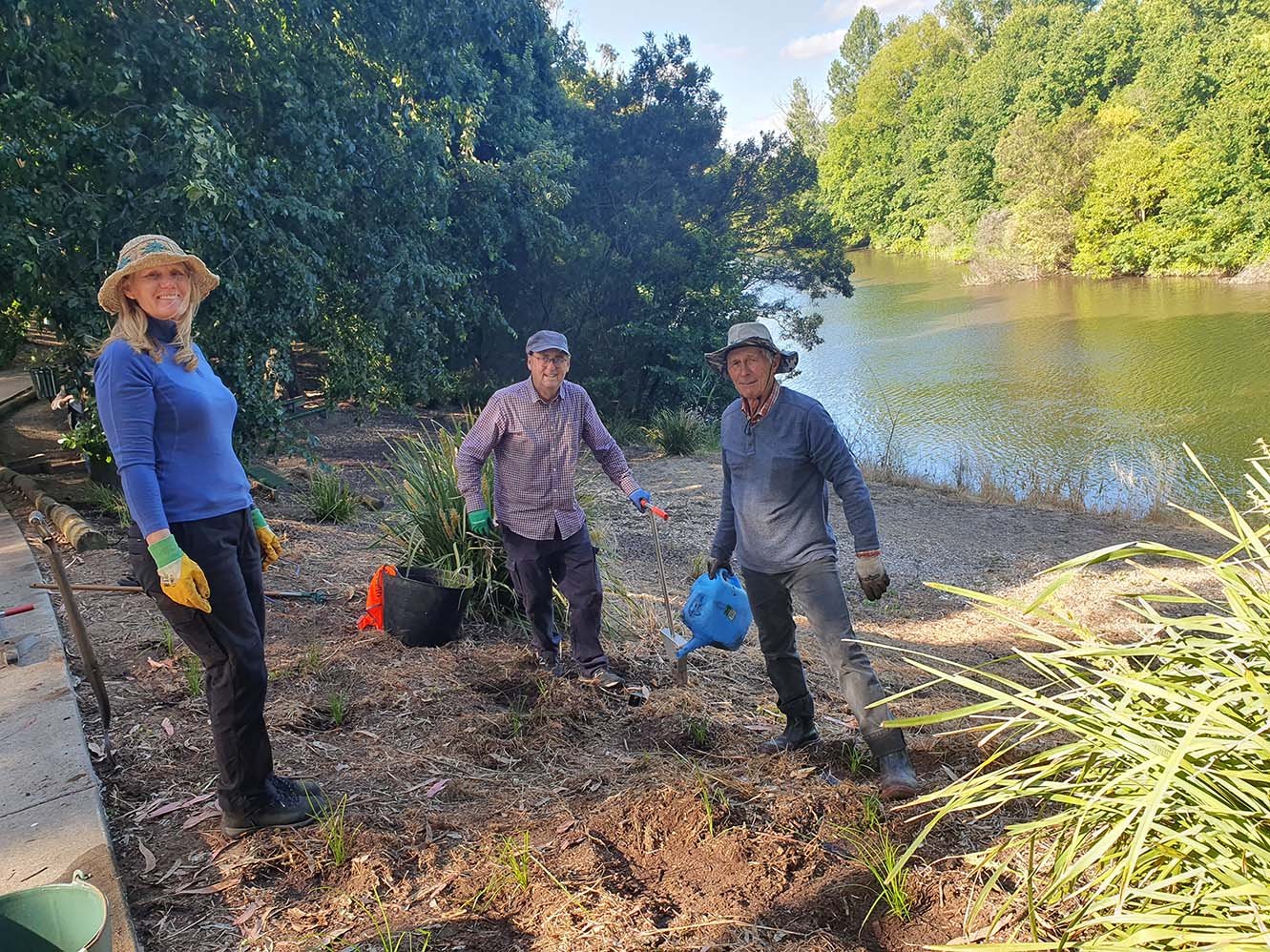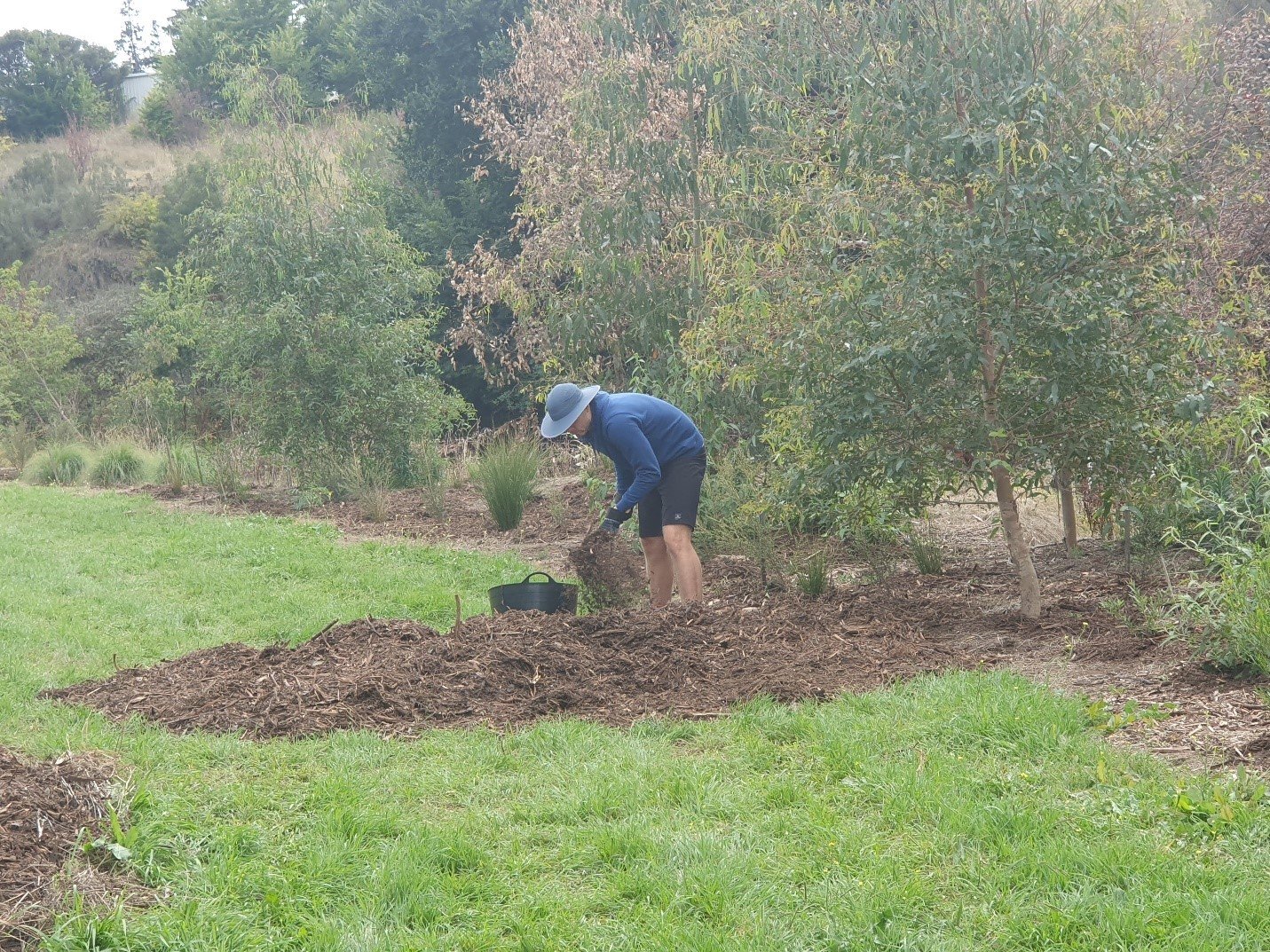
History Project Stories
A New Story - Queanbeyan River
Queanbeyan Landcare has been working at various sites along the Queanbeyan River since the 1990’s, in partnership with other organisations. In 2023 work is happening at both the Riverside Cemetery site (off Erin Street) and the Outdoor Classroom (off Thorpe Avenue).
The Riverside Cemetery Site
In 2019 a planting of over 4,000 native plants was undertaken as part of an Enforceable Undertaking QPRC had with the Environment Protection Authority (EPA) of NSW following a sewage overflow from the Morisset Street Pump Station. The plantings stretched along the river from the Morisset Street Bridge to the border with the ACT at the Historic Railway Bridge.
The aim of the project was:
‘To restore natural habitat with the added benefit of shading and therefore cooling the river. In the height of summer, keeping the river cool will protect aquatic species and reduce the likelihood of algal blooms’.
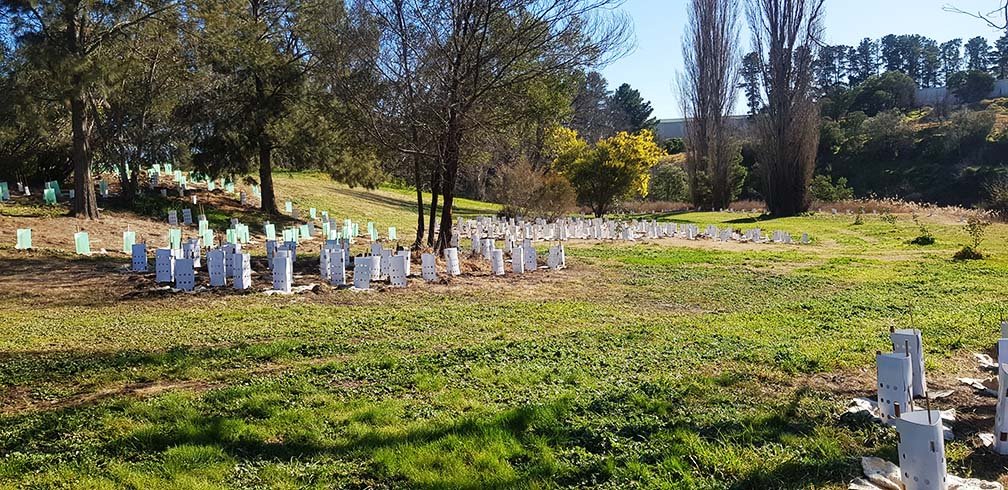

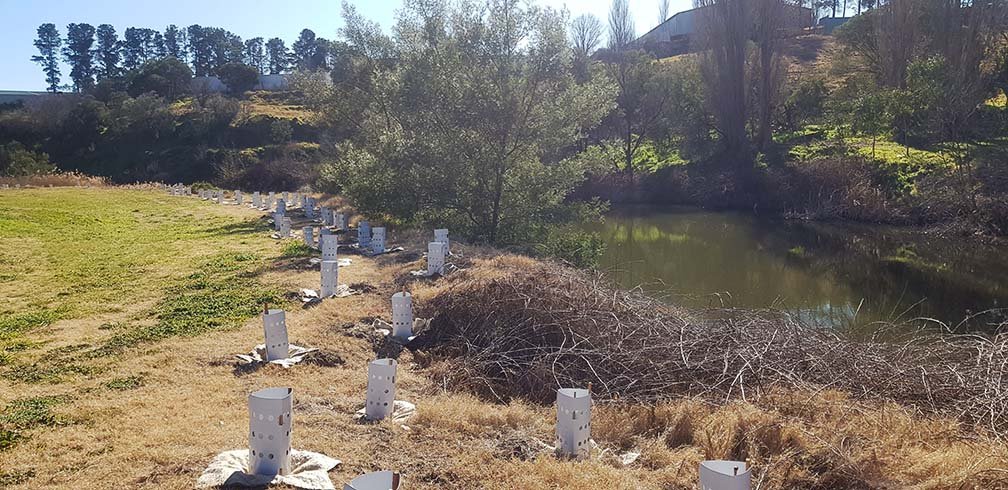
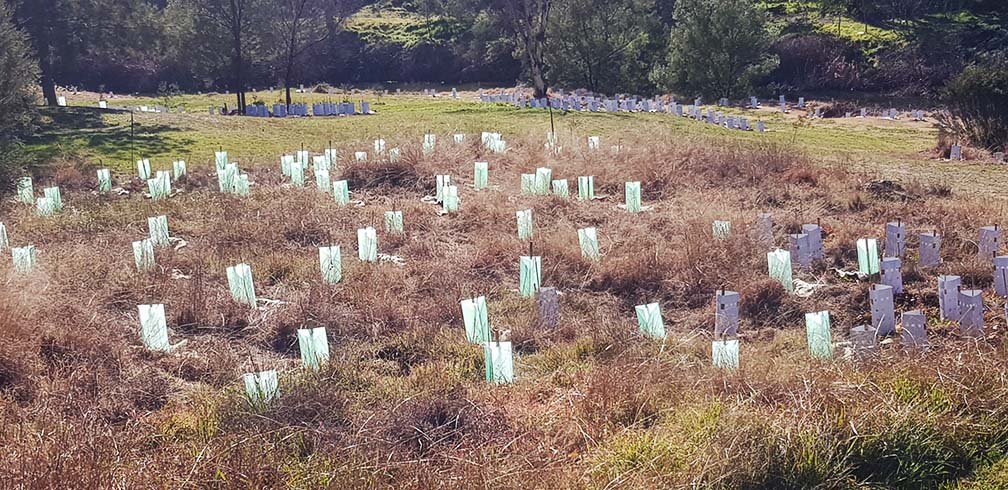
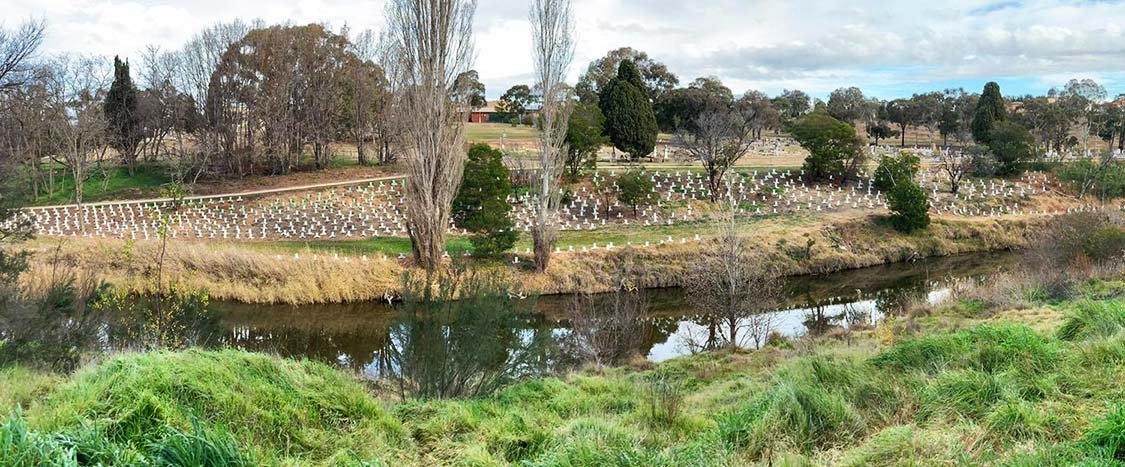
The species planted by Molonglo Conservation (formerly Molonglo Conservation Group) included:
Eucalyptus viminalis (Ribbon Gum)
E. bridgesiana (Apple Box)
Acacia decurrens (Green Wattle)
Acacia mearnsii (Black Wattle)
Acacia rubida (Red-stemmed Wattle)
Bursaria spinosa (Native Blackthorn)
Westringia fruticosa (Coastal Rosemary)
Themeda sp. (Kangaroo Grass)
Lomandra lomandra (Spiny Head Mat Rush)
Acacia implexa (Lightwood)
Acacia melanoxylon (Blackwood)
Poa labillardieri (Snow Grass, Tussock Grass)
Cassinia longifolia (Shiny Cassinia)
By late 2021 it was noted by Queanbeyan Landcare that the trees, shrubs and grasses, though growing well due to the wet conditions, needed weeding, mulching and support. The group Friends of Queanbeyan River formed with the initial aim being to focus on the area at the end of Erin Street below the Old Cemetery. Queanbeyan Palerang Regional Council supported the initiative by mowing the site and delivering mulch. The Friends of Queanbeyan River gathered regularly throughout the year to mow, weed, remove tree guards and spread mulch.
A major community event hosted by QPRC for National Tree Day was held at the site on Sunday 31 July, 2022. Queanbeyn Landcare members Tom Baker, Ian Johnsson, Michele Dovers and a number of others were responsible for much of the planning including site preparation, plant selection and demonstration of planting technique. Nine planting areas were identified. The areas were based on the 2019 plantings and are separated by mown grassed areas. The characteristics and existing vegetation were noted.
The plants selected for each area were determined by members of Queanbeyan Landcare and others based on their understanding of the best growing conditions for each plant. All selected plants were native plants that are local to this area. They are suited to the local environmental conditions e.g. climate and soil type, meaning they should require less maintenance and have good survival rates. They may also positively impact the native flora and fauna by providing the right food source and habitat for local wildlife. The plants would help to stabilise the area along the river and add to the overall amenity and beautification of the area. To build habitat complexity a range of species and growth forms were selected. Plants may be part of the canopy (usually trees or large shrubs), the understorey (usually smaller shrubs) or the ground layer (usually grasses and other ground covers). All are important.
The following species were planted:
-
Casuarina cunninghamiana (River Oak)
Allocasuarina verticillata (Drooping Sheoak)
Eucalyptus rossii (Scribbly Gum)
Eucalyptus mannifera (Brittle Gum)
Eucalyptus bridgesiana (Apple Box)
-
Acacia mearnsii (Green Wattle, Black Wattle)
Acacia dealbata (Silver Wattle)
Acacia melanoxylon (Blackwood)
Kunzea ericiodes (Burgan)
Leptospermum brevipes (Slender Teatree)
Dodonea viscosa (Hopbush)
Bursaria spinosa (Sweet Bursaria)
Cassinia longifolia (Shiny Cassinia)
Gynatrix pulchella (Hemp Bush)
-
Poa labillardieri (Tussock Grass)
Lomandra longifolia (Spiny-head Mat Rush)
Carex apressa (Tall Sedge)
We were joined by over 100 volunteers. Members of groups such as the Queanbeyan Country Women’s Association, Headspace, the Sikh Community, Queanbeyan Park Run, Australian Volunteer Program, the Queanbeyan Scouts and well as many locals joined in the activity. Queanbeyan Palerang Regional Council provided additional support including promotional material, council staff, mulch, plants, the water truck and most importantly a Coffee Van.
Unfortunately a few days after the event some of the area was inundated by flooding but the Friends group replanted as required but were also pleased that many of the new plants survived almost 48 hours of inundation and strong currents.
[Images © Tom Baker 2022]
Neoen is an international company currently constructing The Capital Battery on a site in Oaks Estate as part of the ACT Government’s 2020 renewable energy action. Neoen employees celebrate Solidarity Day by contributing something to the community and fortunately for us they contacted Queanbeyan Landcare.
On 4 November 2022 staff from Neoen planted 250 trees, shrubs and grasses. Karen Williams and Jeannine Fromholtz from Molonglo Conservation Group spoke about the history of the river, the threats it faces and how to protect it now and into the future. Queanbeyan Landcare volunteers Tom Baker, Ian Johnsson, Michele Dovers, Dave Grey and Paul Harris worked alongside the enthusiastic Neoen staff. A great day for all!
[Images below © Michele Dovers 2022]
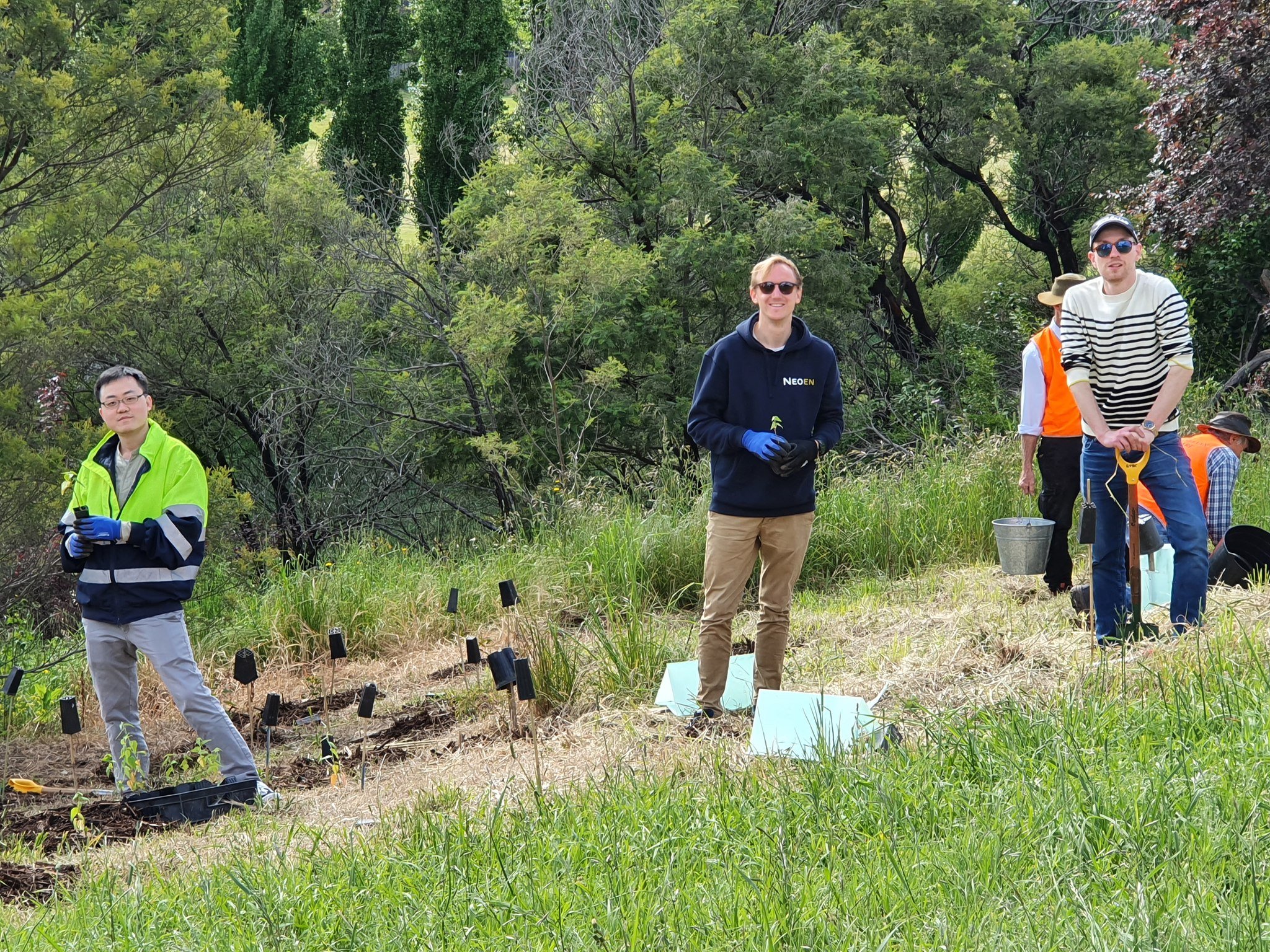
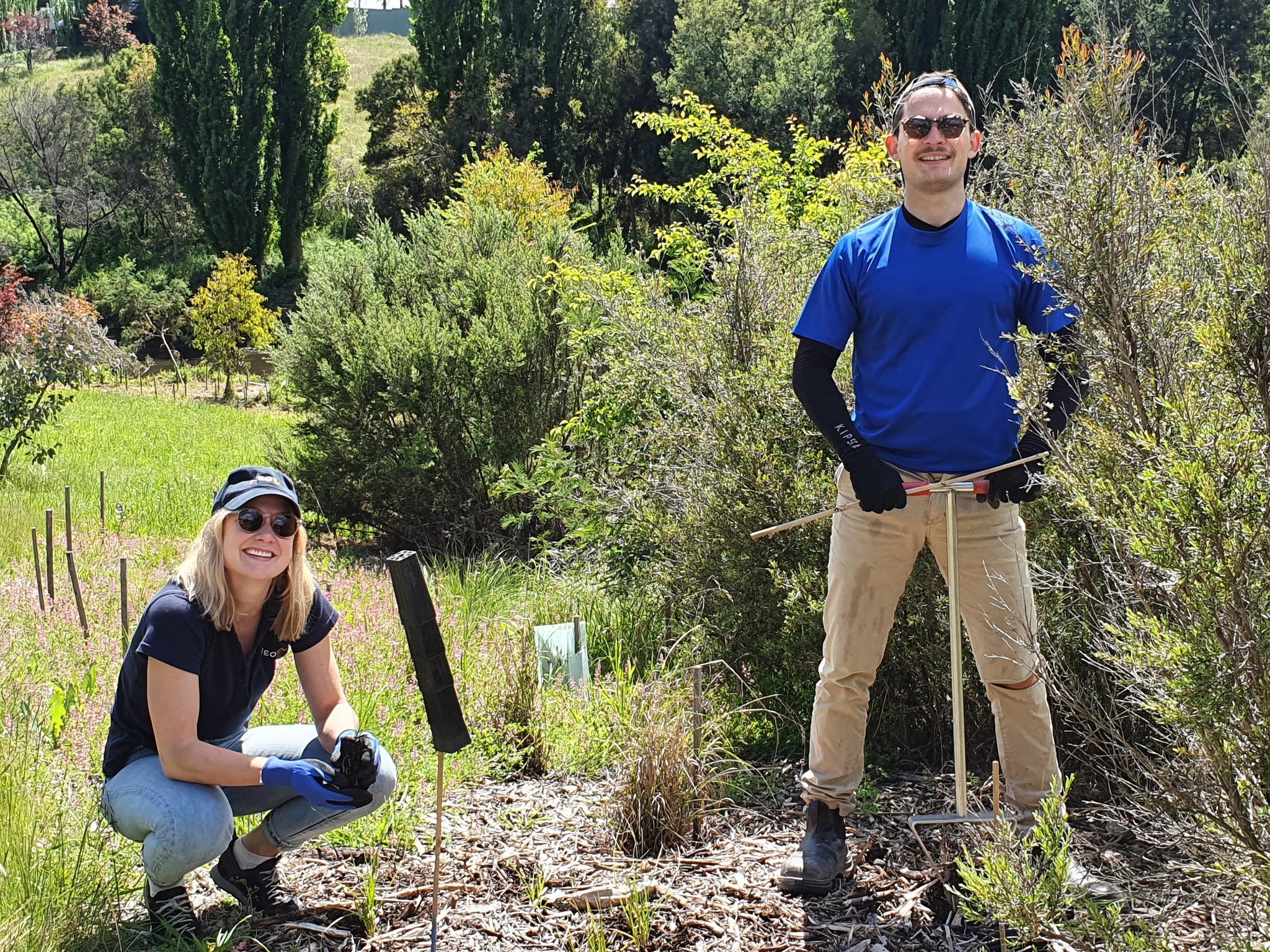



In 2023 this maintenance work continues, the growth in the plants is considerable.
February 2022
May 2023
As part of the World Environment Day celebrations Tom Baker led a Short Walk at this site on Sunday 4 June. Tom and many others from the group led over 50 people on an inspection of the site, explaining what has been achieved and of course inviting others to join the group.
[Images below © Michele Dovers 2023]



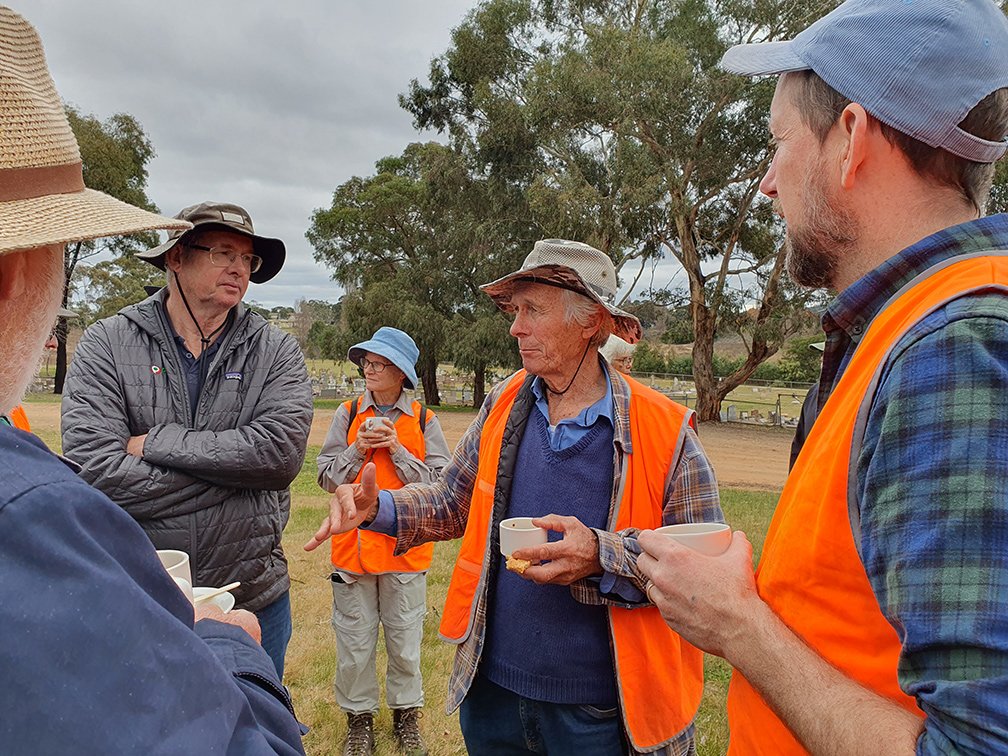


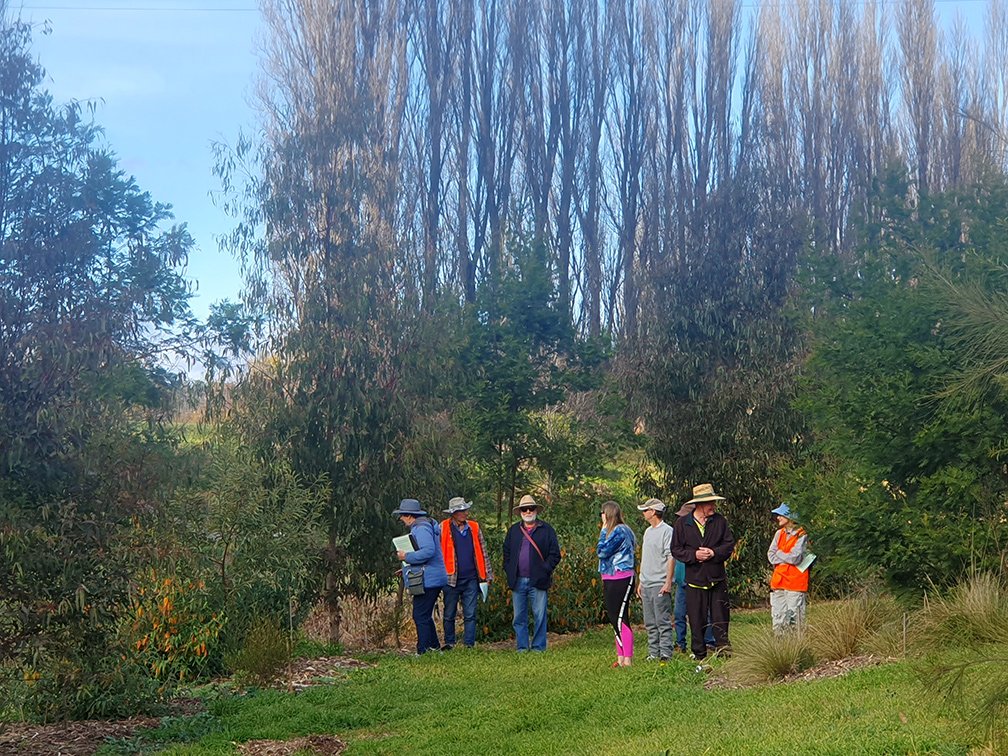
Views along Queanbeyan River to Oaks Estate
Views of Queanbeyan River from above
[Drone images © Joel Johnsson 2023]
The Outdoor Classroom
From 2005 until 2007 Queanbeyan Landcare was responsible for weed removal, planting and the installation of the seats that comprise the Outdoor Classroom. This site cn be found along the Queanbeyan River between the stormwater drain that runs off Thorpe Avenue and the small rocky outcrop further downstream called Connie’s Rock. It was used on many occasions for Environmental talks with school groups.
In recent years that planting has been accidentally sprayed and more recently mowed resulting in the loss of many of the native understory plants. The site has been inundated several times due to flooding, erosion has occurred, and weeds have appeared.
2011 Flooding images © Tom Baker
In 2022 the Friends of Queanbyan River group met with staff from QPRC and decided that with support they could improve the area. Queanbeyan Landcare had the plants ready to go as Tom Baker had been propagating the seeds of Carex apressa and Gynatrix pulchella for some time. These two species were ideal for this area as they both are important riverbank stabilizers in times of flood. Other plants were selected that would provide habitat for many of the small birds and native animals that frequent the river corridor. The first planting occurred on 15 December 2022. 170 plants mainly Carex apressa (Tall Sedge) and Gynatrix pulchella (Hemp Bush) were planted by 6 volunteers in just 1 hour with the help of our Hamilton Planters.
[Gallery images © Michele Dovers]
Since then a number of planting, weeding and mulch spreading events have taken place at the site.
Connie’s Rock which is just downstream from the Outdoor Classroom is part of Queanbeyan’s early history being a significant site for gold mining along the river. The rock is called Connie’s Rock for the nuns from the nearby convent who would cross the river at that point (the river looked different then).

